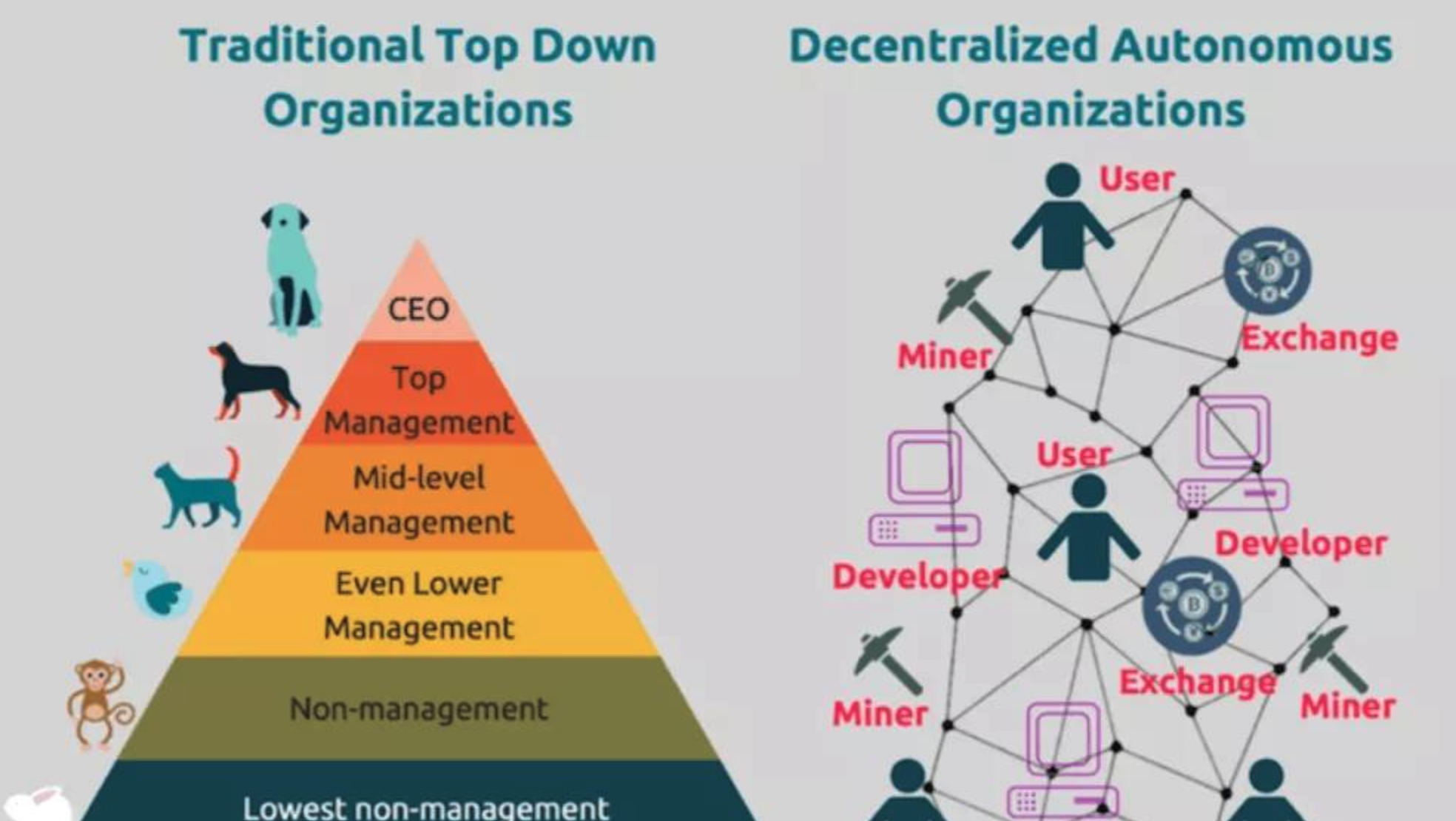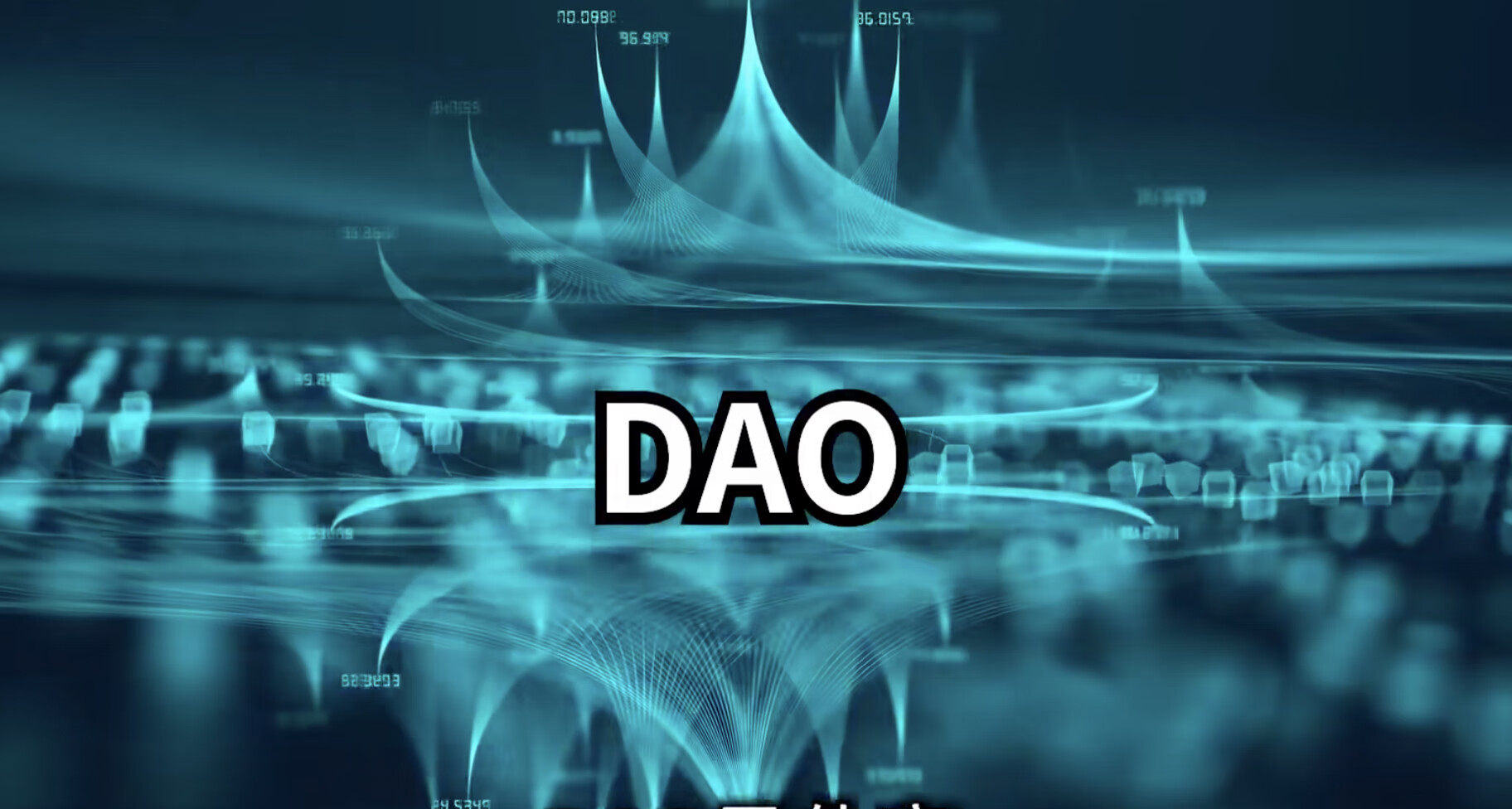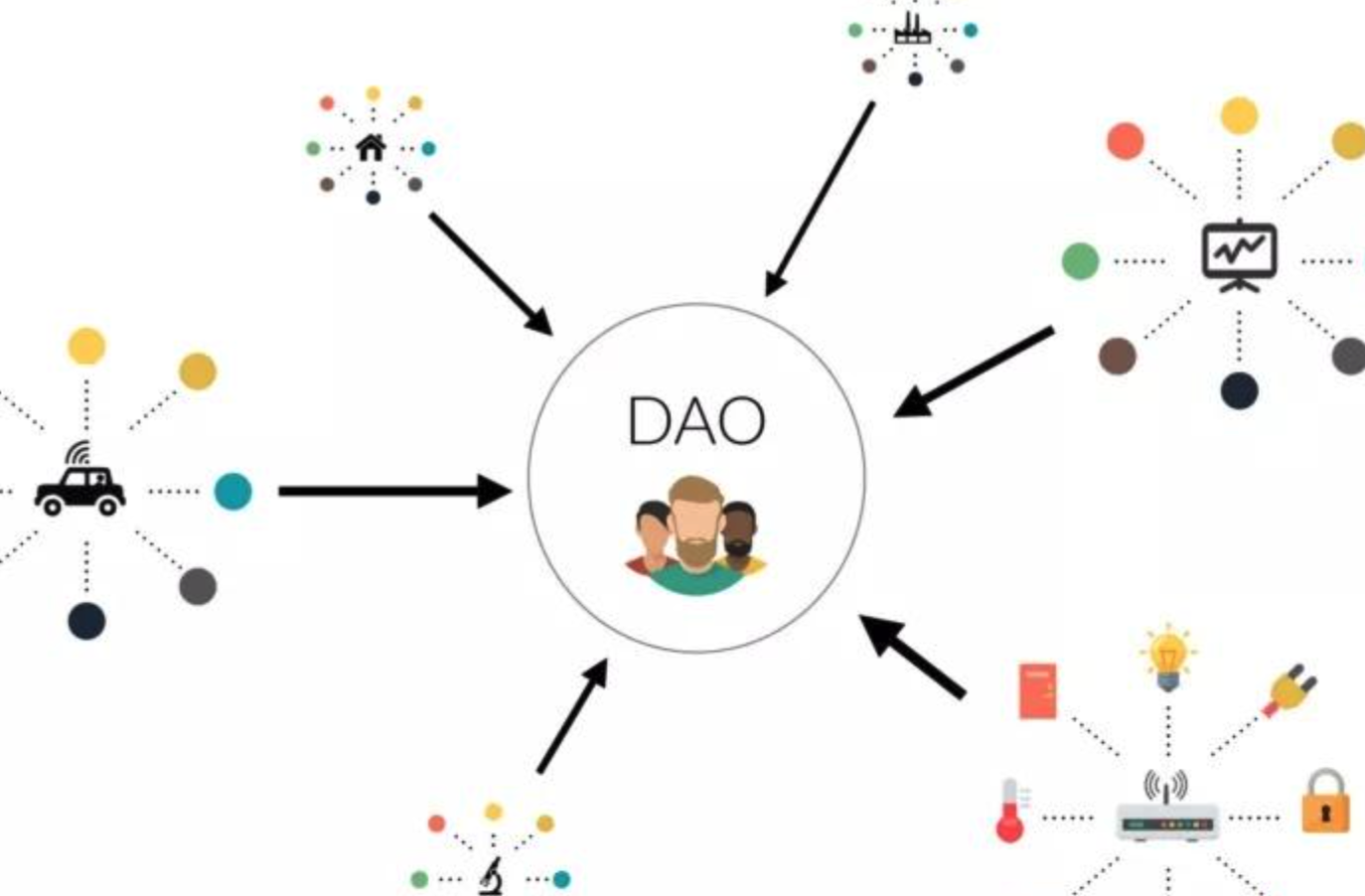Have you ever encountered this situation: I have a great idea and want to develop a project that "changes the world", but I have neither the technology, the connections, nor even the funds, so I have no way to start taking action. , extremely painful. For example, in a hacker competition, I came up with an idea that was sure to win an award, but I couldn't find a partner and couldn't complete it alone, causing the opportunity to slip away.
Today I will introduce a technology that can change your current situation: DAO. But before introducing DAO, we need to first understand web3.0, which everyone is discussing enthusiastically.
Web3.0
The biggest feature of the web 2.0 era is "centralization", with several large companies as the center providing services to outsiders. For example, we are familiar with the search services provided by Google, the social services provided by WeChat, and even the shopping services provided by our JD.com. In fact, it is not limited to the Internet, but the entire social structure today is similar: UnionPay provides financial services to the center, insurance companies provide insurance services to the center, and so on.
The web 3.0 era we are about to enter has the following biggest features: decentralization, ensuring data information security based on blockchain technology, and AI technology. Most of us have already experienced the services brought by AI technology, and the DAO model I introduced today is closely related to decentralization and blockchain technology.

Introduction to DAO
The full name of DAO is Decentralized Autonomous Organization, and its Chinese translation is "Island". Its nature is simply a "decentralized company". Its core concept and most basic principle is Code Is Law.

Here I will give an example to explain throughout the entire article: I suddenly wanted to open an online store one day, but I had no relevant experience, no purchase and sales channels, or even enough funds. It's a "strange" idea, but in the web3.0 era this is not a blocking problem. As long as I have an idea, I can initiate a DAO. I can describe my thoughts about the entire "company" and clarify the currently vacant "positions". If there are other friends who are interested in this idea and meet the position requirements, they can join and form a DAO together.

The main components of DAO
There is no fixed template for the DAO model, but a complete DAO must contain the following basic components. Let me explain it based on the example of the "online store" I just gave:
1. Goal description
This part is not included in the main code of DAO, but it is indeed the most important part of DAO. It is similar to the "tender document" for my "online store". It must explain in detail what the store wants to buy, what its characteristics are, and how to plan its future development direction. Its main function is to attract members to join. If you want others to be interested in your DAO, more people will join. This is also the most important goal of DAO: to attract more members.
2. Role division description (talent allocation)
After many friends noticed my DAO, the next step they had to make clear was: I want to join this "company", what can I do? This is the main function of "role division", which describes the types of talents required by DAO and the specific work that each position needs to perform. Everyone who wants to join the DAO can decide by themselves what capacity to join. In the "online store", you can join as long as the position is vacant, such as as a buyer, salesperson or investor.
For example, this description: "We need a buyer whose job is to purchase bread at an average price of 20 yuan every time the bread inventory is lower than the threshold, so that the inventory reaches X pieces." This description is both a description of the responsibilities of this position and a code. In DAO, code is legal. If you agree and join DAO, you must follow the code in DAO and perform your responsibilities according to the description of the code. If you do not complete it, you will not receive benefits.
3. Acceptance criteria and bidding rules
DAO also needs a complete and convincing set of acceptance criteria to judge the work completion of each position, which is also described and judged by code. The final acceptance criteria for each position may be different, and some may even have a "bidding" mechanism. For example, in the DAO of the "online store", my position is: responsible for developing the code for the purchase system and analyzing sales data through AI. Determine the specific quantity of "X pieces" of bread purchased each time. But although the code I wrote can calculate the answer, it is not necessarily the optimal code. There is another programmer who also joins the DAO to compete for my position. Then the one who writes better code between the two of us will win. bid.
The collection standards and bidding rules ensure that DAO can achieve its goals and continue to optimize, and that the failure of one link will not cause the entire "company" to stagnate. The company's management simply means "managing people" and "managing money", and the role description and acceptance criteria are the standards for "managing people".
4. Set incentives and rewards
After joining DAO, if what I pay is labor, then what I need to get is reward; if what I pay is capital, then what I need to get is dividends, which is the same as a real company. In DAO, incentives and rewards are the "managing money" part of company management. After I complete my responsibilities and pass the acceptance, the code will immediately implement the reward mechanism and transfer the proceeds to my account.
The reward mechanism is based on "blockchain" technology. For students who are not very familiar with this technology, I will briefly introduce it here: Blockchain is an important manifestation of "decentralization", which is different from the current "recorded by a bank" "The number of deposits in your account", the blockchain implements "national accounting", each blockchain user records the total amount of money in your account, and every time a transaction is completed, the ledgers in the hands of all users will be updated. Your deposits change, so the method of hacking a certain center is no longer effective, so this "accounting" model is safer; at the same time, because there is no longer an intermediary organization like a "bank", the money has "immediate arrival". The advantages of "account" and "no agency fees".
Of course, to join DAO and receive incentives, you need a digital wallet based on the blockchain, and the incentives issued are also digital currencies. Although the concept stocks of digital currencies are highly hyped now, they will still be used when web3.0 is really popular. It will return to the basic properties of "value symbol". Funds are managed by code, without following legal procedures and accounting procedures, ensuring safety, fairness and speed. At the same time, there is no "corruption" or "embezzlement of public funds" and other behaviors.
5. Disaster response mechanism
The DAO concept currently discussed online basically mentions its strengths and advantages, and rarely mentions that as a "company", it may actually fail. When encountering this kind of situation again, we must use a strong enough disaster response mechanism to deal with it, including the fallback criteria of the capital pool, the closing of completed work, the processing of remaining resources and "produced product" inventory, etc. The disaster response mechanism should not only minimize losses and protect the rights and interests of participants, but also give confidence to DAO participants so that more people can join the DAO with greater confidence.
To sum up, DAO only needs to have an idea, someone agrees with your idea, invests in you, and then establishes rules and attracts participants to start running. The whole process does not require complex legal processes or accounting processes. It is based on one principle: the code is Law, a decentralized "company" automatically managed and run by rule code. One characteristic of a company established through DAO is that no one is managing and operating it. Even if the "employees" in a certain link leave, as long as the "system does not die", it can attract new members to join and continue to operate semi-permanently.
So far, the most well-known and successful example of a DAO is Bitcoin. The issuance of Bitcoin is automatic. After issuance, it will be distributed to miners according to rules, and no one manages the entire Bitcoin system. Even if Satoshi Nakamoto dies. , the Bitcoin system will continue to operate, and the income status of the entire Bitcoin system is transparent and open. All participants can also check the number of Bitcoins in Satoshi Nakamoto’s account, even if you don’t mine. Others continue to mine and keep the entire system operating, which is in line with the bidding rules.

DAO tools
Understanding what is required for a DAO is the first step in building a DAO. Since you have taken the first step, you should now be familiar with the most used and important DAO tools in this field.

Here I also include several DAO-related tool websites:
DAOstack: An open source software stack designed to build and support DAOs.
Gnosis Safe: Multisig wallet for managing digital assets of DAO on Ethereum.
Discord: A channel for sharing ideas and discussing governance proposals.
Coordinape: Expand your community with tools to reward contributors, incentivize participation, and manage resources.
Mirror: A publishing platform that allows creative projects to be funded through tokenized crowdfunding.
The emergence of DAO allows each of us to start our own "company". Going back to our original theme, if you now have a good idea for a hacker competition, you might as well try this organizational model to try to realize your ideal.
Author: JD Retail Jiang Hai
Source: JD Cloud Developer Community Please indicate the source when reprinting